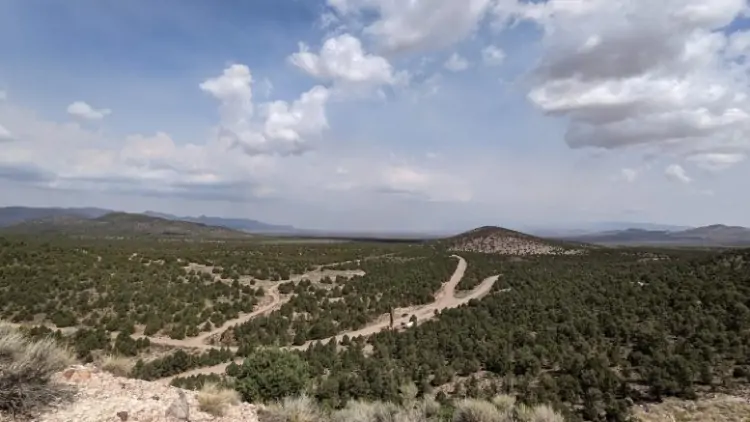Nevada King Gold stock soars on bonanza grade results from Atlanta project
Shares of Nevada King Gold (TSXV: NKG; US-OTC: NKGFF) soared on Monday after the company reported bonanza oxide gold of 11.64 grams per tonne over 108.3 metres from recent drilling at its Atlanta mine project in Nevada.


AT23WS-44 represents the most gold-rich drill hole ever recorded at Atlanta, the company said, and it contains the highest-grade individual drill assay interval ever reported from the project of 169.8 grams gold per tonne over 1.5 metres. Also included is a 29-metre interval grading 37.16 grams gold.
“The high-grade interval in AT23WS-44 gives us another starting point for tracking higher-grades proximal to high-angle feeder structures cutting up through the flat lying horizons that correlate to stratigraphy hosting most of the gold at Atlanta – namely the silica breccia and overlying silicified volcanic horizons,” said Cal Herron, exploration manager of Nevada King, in a release.
“It is important to note that the high-grade ‘core’ mineralization seen in AT23WS-44 (29 metres at 37.16 grams gold) is not related to a narrow vein that was drilled down, but rather occurs within the same flat-lying replacement horizon penetrated in surrounding holes at similar elevation.”
The drill hole was sited 120 metres northwest of the Atlanta pit to locate and test the West Atlanta Fault #1 (WAF1), and was collared 20 metres west of previously reported AT22WS-5C (1.08 grams gold over 112.7 metres) and 22 metres east of previously reported AT23WS-20 (3.04 grams over 61.1 metres).
Including AT23WS-44, a total of three holes were drilled northwest of the Atlanta pit to fill-in drill hole gaps across the northern part of the West Atlanta graben zone that was identified earlier this year.
Hole AT23WS-44 is interpreted to have penetrated the mineralized zone near the middle of a high-grade zone close to and possibly intersecting the WAF1. AT23WS-20 intersected the western portion of the high-grade (over 3 grams gold per tonne) zone, while AT23WS-5C on the east narrowly missed the high-grade domain.
The company’s new geological model supports the presence of very high-grade zones or ‘jewelry boxes’ that can occur at the juncture between sub-vertical feeder zones and flat-lying horizons of replacement-type (Carlin-type) mineralization, Nevada King noted.
Now with WAF1 firmly located, the company said it is planning to follow up on AT23WS-44 with closely spaced vertical holes east and west to better determine the lateral extent and grade distribution in and around the feeder structure, while also following it along strike, where it remains open to the north and south.
Mineralization in this high-grade interval, according to Nevada King, is strongly oxidized as demonstrated by the gold cyanide solubility analyses.
Located in the prolific Battle Mountain trend, the Atlanta mine is a historical gold-silver producer with a pit-constrained measured and indicated resource of 460,000 oz. gold (11 million tonnes at 1.3 grams gold per tonne) plus 142,000 inferred oz. gold (5.3 million tonnes at 0.83 gram gold).
By market close Monday, Nevada King Gold’s stock was up by 37.7%, trading at 42¢ apiece. The company, currently the third-largest mineral claim holder in Nevada, has a market capitalization of $111 million.














